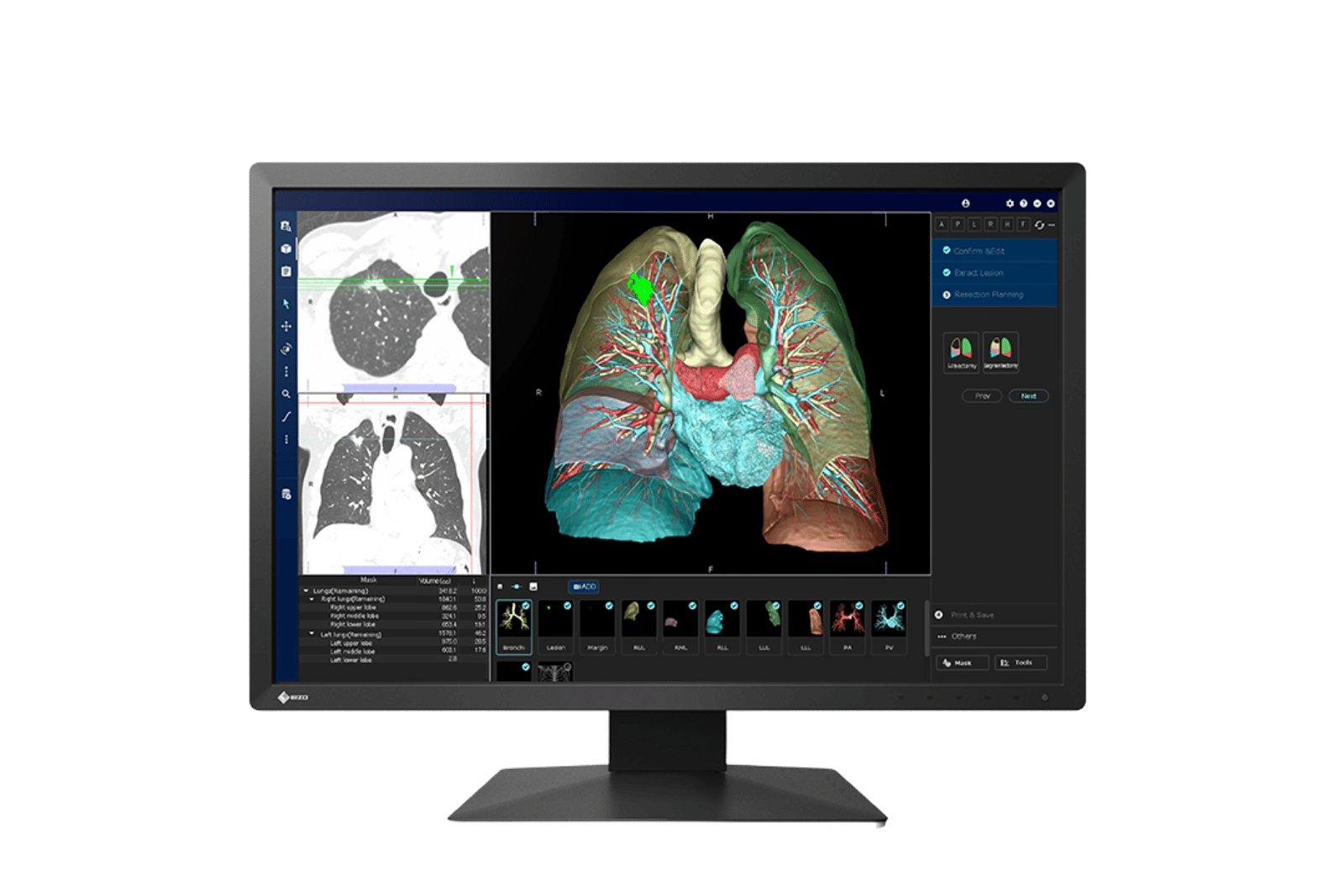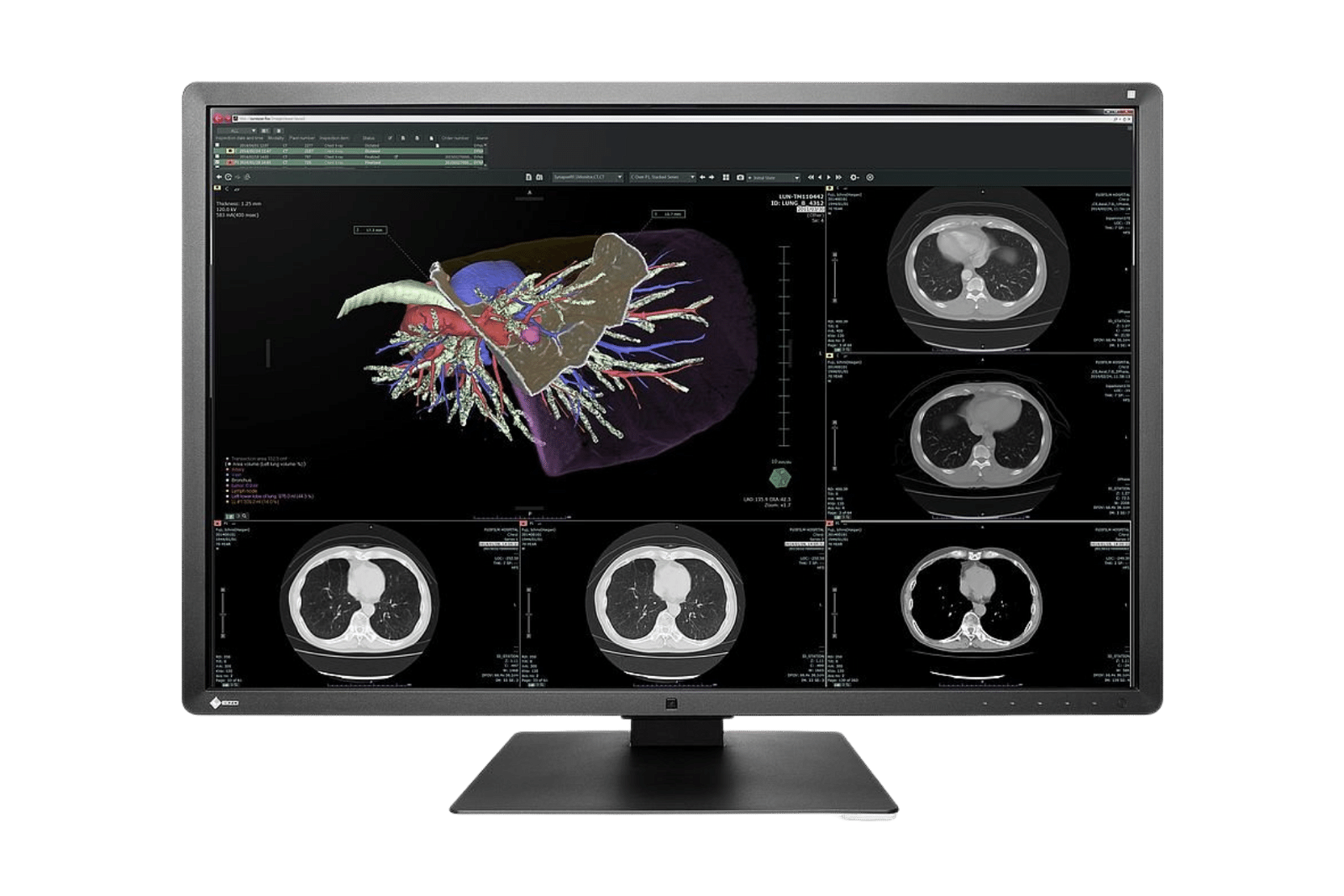EIZO Monitors for
Pathology
Razor sharp cell and tissue images
The digitalisation of pathology has made it easier to assess the smallest cell and tissue structures, which are now transferred to screens via high-quality opto-electronic microscopes, where they can be viewed in the greatest detail. The monitors must provide an excellent image quality so that even the slightest changes or anomalies can be detected.
EIZO recommends the following monitors for pathology
monitors for pathology
EIZO benefits at a glance:
- Large-format monitors
- An individual reproduction curve can be calibrated
- Excellent colour differentiation
- Large look-up table for correct colour reproduction
- Deep black levels
- Brightness stability sensor for long-term monitor quality
- Long product life cycle
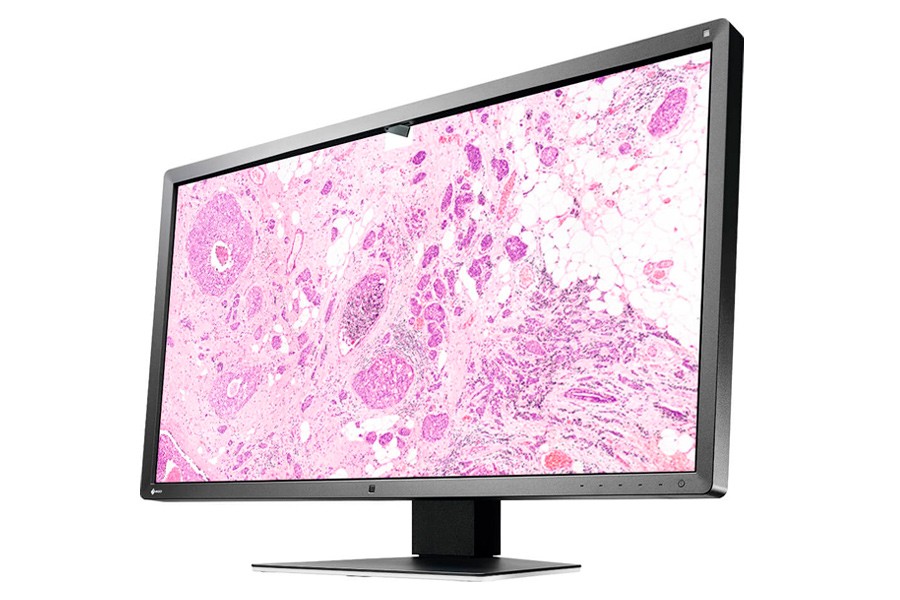
Ideal for individual requirements in pathology
EIZO monitors are optimally equipped for this challenge. Not only do they have an excellent screen resolution, but they also display colours with outstanding accuracy. A high (spatial) resolution, a wide gamut, a deep black level, homogeneous illumination, a reproduction curve that can be calibrated according to individual requirements and consistent image reproduction quality guarantee reliable diagnostics, even for the smallest tissue structures.
What is important when choosing a monitor for pathology
1. Resolution
The higher the monitor’s resolution, the more details the user will see. Images are less pixelated, have sharper contours, and more content is displayed at one time.
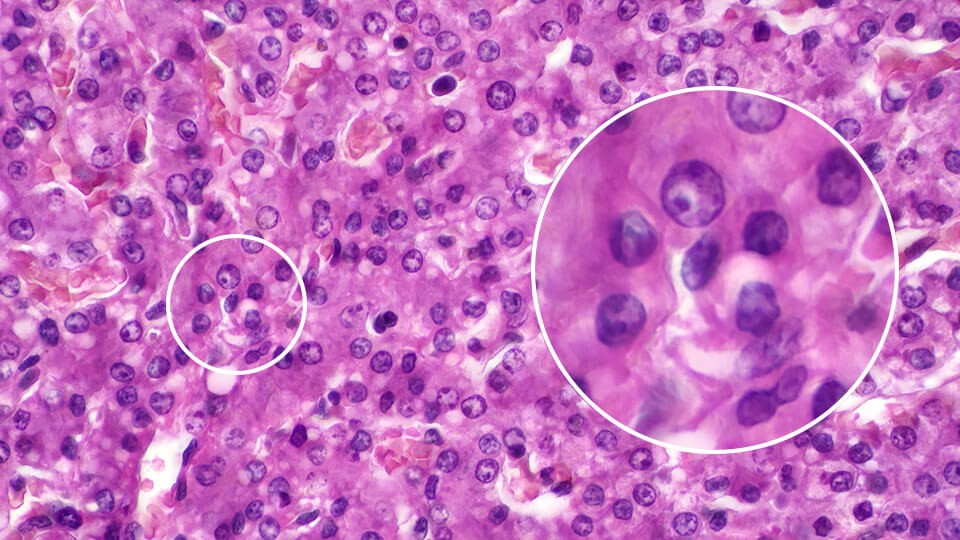
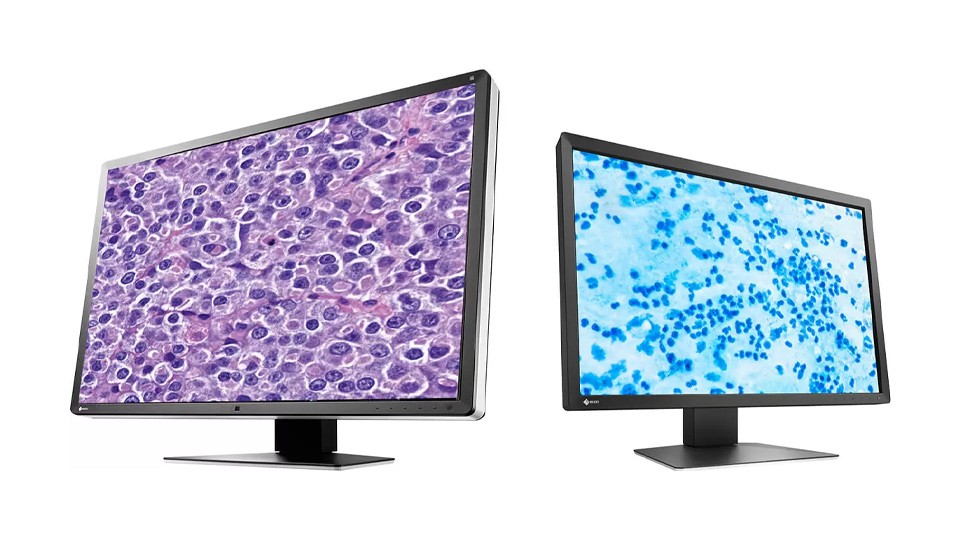
2. Screen size
For digital pathology applications, 27-inch to 32-inch widescreen monitors are recommended to fill the user’s natural field of view.
3. Workstation
To get the most accurate information out of each image, you need to consider the screen size, resolution, and distance between the monitor and the user at the workstation when selecting a monitor.
4. Image brightness
The Bundesverband Deutscher Pathologen e.V. (National Association of German Pathologists) recommends an image brightness of at least 300 cd/m2 for monitors used in pathology diagnostics. This roughly corresponds to what you would see under a conventional microscope. To maintain a consistent brightness over time, monitors that offer much higher brightness levels are recommended to provide a buffer to allow for the aging of the device and stricter brightness standards in the future.
5. Contrast
To ensure high differentiability in dark and bright areas on an image and be able to control homogeneity, a contrast ratio of min. 1000:1 (static contrast ratio) is recommended for a monitor used in pathology diagnostics.
6. Image homogeneity
Inhomogeneity causes an image to appear differently depending on its position on the screen. This could result in the user having to move the image on the monitor in order to obtain all the information from it. With the DUE (Digital Uniformity Equalizer) function, medical monitors in the RadiForce series can compensate for differences in brightness and colour.
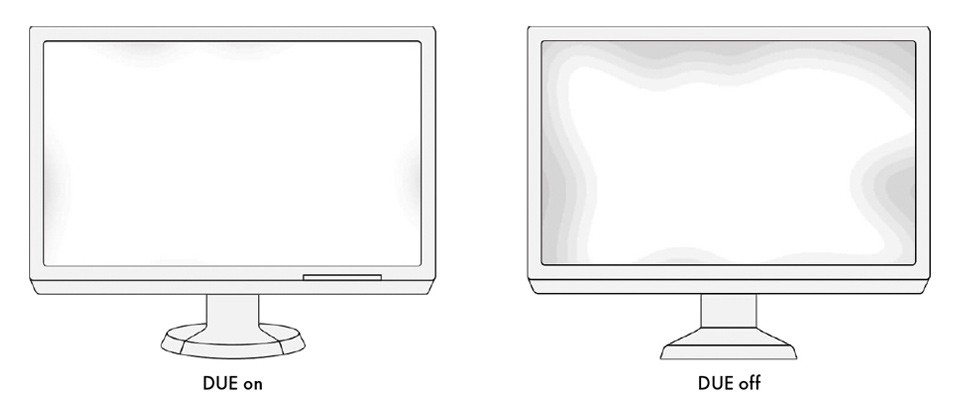
7. Calibration
Routine quality control ensures that pathological diagnoses are consistent and reliable. As a result, users trust the information they see on the screen and there is a lower risk of misdiagnosis.
8. Colour
It is important for the work of pathologists that all monitors meet the established colour standards.
9. Durability
Medical monitors have a much longer service life than standard monitors. This means they can be in heavy use over a long period of time.

10. Quality control software
Quality control software for medical monitors helps in performing monitor validation tests according to national and international quality standards and in adapting the monitor to the specific working environment.
+Learn more
Download our brochure and learn what to look for when specifying monitors in your digital pathology workflow.
PDF | 15.192.96 MB

